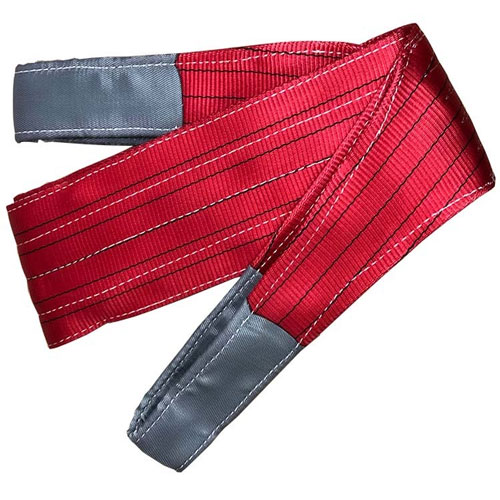Proper inspection of a **5T webbing sling** is crucial for safe Lifting operations. Follow these steps to check for damage: ### **1. Visual Inspection**
- Look for **cuts, tears, or frayed edges** on the webbing.
- Check for **broken stitches** or loose threads.
- Inspect for **abrasions, burns, or chemical damage** (discoloration or stiffness).
- Ensure **labels and markings** (WLL, capacity, manufacturer) are legible.
### **2. Check for Embedded Debris** - Remove dirt, grit, or foreign objects that can weaken the Sling. - Avoid using slings with embedded particles—they cause internal wear.
### **3. Examine the Eyes & Fittings** - Inspect **flat eyes or loops** for distortion, cracks, or stretching.
- Ensure **metal fittings** (if any) are not corroded or deformed.
### **4. Look for UV & Chemical Damage**
- **UV degradation** causes fading or brittleness—replace if stiff or discolored.
- **Chemical exposure** weakens fibers—discard if sling feels hard or shows burns.
### **5. Test for Elasticity & Strength**
- A damaged sling may stretch excessively—compare to an undamaged one.
- Never use a sling with **reduced diameter or thinning areas**.
### **6. Follow Safety Standards** - Comply with **OSHA, ASME B30.9, or EN 1492-1** regulations.
- **Remove damaged slings** immediately—never repair webbing slings.

### **When to Replace a 5T Webbing Sling?**
✔ **Major cuts or tears**
✔ **Broken stitching**
✔ **Heat/chemical damage**
✔ **Faded or illegible markings**
Regular inspections prevent accidents—always inspect before each use!
** Keywords:** *5Tonne webbing sling inspection, 5-ton lifting sling safety, how to check webbing sling damage, polyester sling maintenance, when to replace lifting slings*

 Sweep WeChat yards pay attention to us
Sweep WeChat yards pay attention to us
